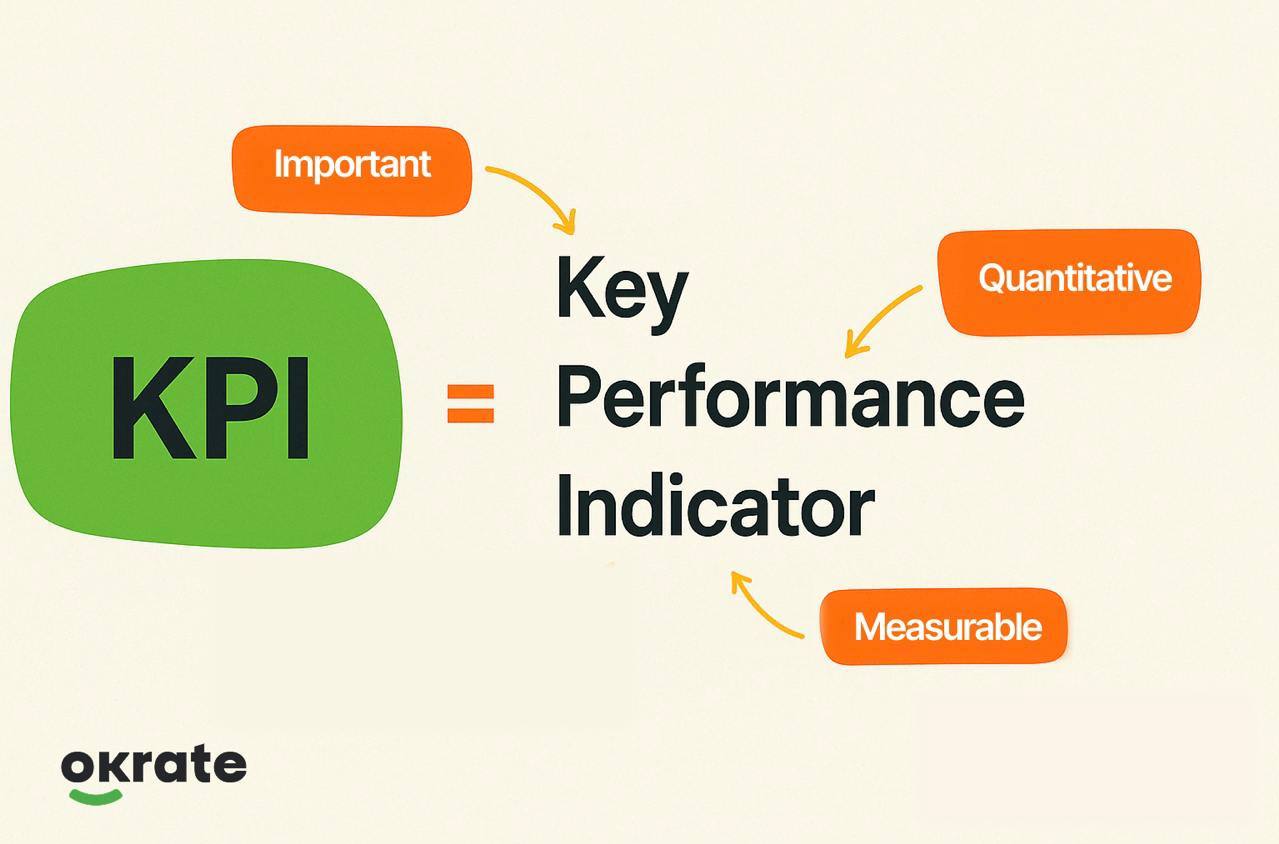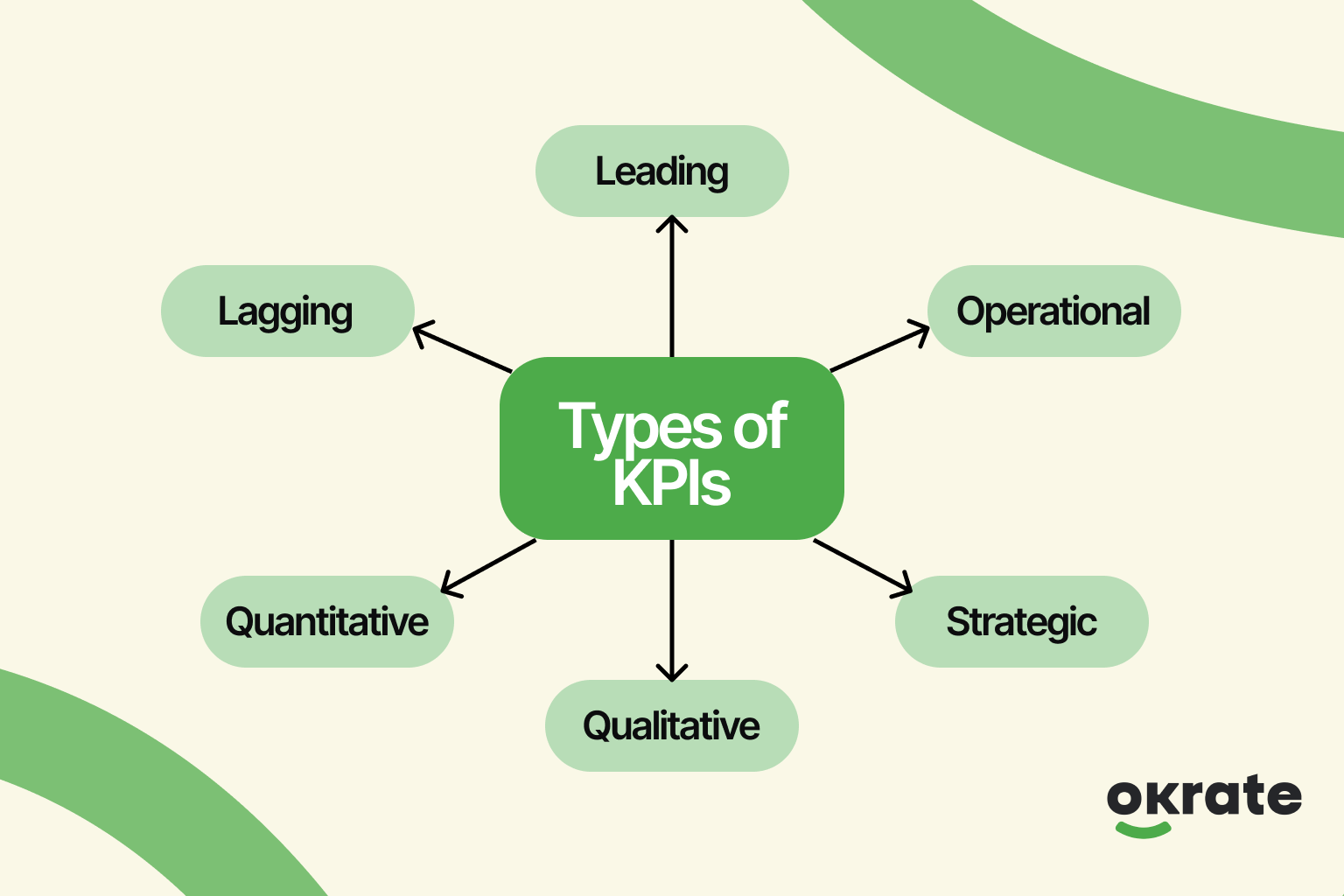In a world of high competition, distributed teams, rapid tech shifts, and volatile markets, companies need clarity more than ever. That’s where KPIs (Key Performance Indicators) come in — a tool that not only measures progress but gives teams, leaders, and investors a shared point of focus.
According to Google Trends, interest in KPIs has been steadily growing over the last 5 years. A McKinsey report showed that companies with a clearly structured KPI system see productivity grow 20–25% faster than their competitors.
A KPI system isn’t just about numbers. It’s about transparency, strategic focus, engagement, and growth. In this article, we’ll explain what KPIs are and how they work, how they differ from goals and targets, and what results a well-designed KPI system can bring.
According to Google Trends, interest in KPIs has been steadily growing over the last 5 years. A McKinsey report showed that companies with a clearly structured KPI system see productivity grow 20–25% faster than their competitors.
A KPI system isn’t just about numbers. It’s about transparency, strategic focus, engagement, and growth. In this article, we’ll explain what KPIs are and how they work, how they differ from goals and targets, and what results a well-designed KPI system can bring.
What is a KPI?

A KPI (Key Performance Indicator) is a measurable value that shows how effectively a person, team, or company is progressing toward a goal.
Examples:
If the goal is to reduce employee turnover, a relevant KPI could be → % of employees who left the company within 12 months.
Important: KPIs are indicators, not goals themselves. They tell you how close you are to the desired outcome — a way to answer, “Are we on the right track?”
Examples:
- Employee retention rate
- Time-to-hire
- Number of SQLs (Sales Qualified Leads) per month
- Net Promoter Score (NPS)
If the goal is to reduce employee turnover, a relevant KPI could be → % of employees who left the company within 12 months.
Important: KPIs are indicators, not goals themselves. They tell you how close you are to the desired outcome — a way to answer, “Are we on the right track?”
KPI vs Target vs Goal — What’s the difference?
These are three elements of performance management that work together but mean different things:
- Goal: the direction, what we want to achieve
- Target: a specific numerical value we aim for
- KPI: the indicator we use to track progress
Why start using KPIs now?
Many companies delay implementing KPIs out of fear of bureaucracy or uncertainty about how to build a system. But the truth is:
KPIs help you:
- Without KPIs, you can’t measure success — you’re guessing
- Without KPIs, employees lose direction — focus gets blurry
- Without KPIs, feedback doesn’t work — there’s no ground for meaningful dialogue
KPIs help you:
- Translate strategy into operational steps
- Measure progress and adjust actions
- Increase accountability and team engagement
The benefits of working with KPIs
A good KPI system isn’t “just a dashboard.” It’s a key to:
- Better transparency — everyone knows what matters
- Higher efficiency — teams focus on clear outcomes
- Greater engagement — people understand why their work matters
- Smarter priority setting — no drowning in daily noise
- Faster decision-making — data at hand = fewer assumptions
- Forecasting and planning — spot bottlenecks and opportunities early
Who uses KPIs (and why)?
KPIs are for every level of the company — just with different goals and indicators. Any organization or team, regardless of size, stage, or industry, can benefit from using KPIs.
A company is like a machine. It’s made of parts — departments — that need to work in sync to keep things running. Each part contributes to the organization’s mission and vision. So KPIs must be used at all levels to ensure the system stays healthy. KPIs should be implemented at both the macro level (company-wide KPIs) and micro level (team KPIs) to give full visibility into organizational health.
For example:
A company is like a machine. It’s made of parts — departments — that need to work in sync to keep things running. Each part contributes to the organization’s mission and vision. So KPIs must be used at all levels to ensure the system stays healthy. KPIs should be implemented at both the macro level (company-wide KPIs) and micro level (team KPIs) to give full visibility into organizational health.
For example:
P.S. In the article “The Benefits of KPIs for Startups and SMBs”, we broke down how exactly KPIs help small businesses grow systematically — with examples for every function.
Types of KPIs: What they are and where to use them

KPIs are categorized by purpose and how they’re measured:

How to choose the right KPIs for your company
A good KPI isn’t “popular” — it’s relevant to your goals.
Tips:
Example:
Goal: Reduce turnover
KPIs: Turnover rate, eNPS, onboarding completion %
Tips:
- Tie KPIs to business priorities
- Make sure the data is available
- Ensure every KPI is clear to the team
- Don’t overload — 3–5 per person is enough
Example:
Goal: Reduce turnover
KPIs: Turnover rate, eNPS, onboarding completion %
How to get the most out of KPIs
To make KPIs work for you — and not just sit in a spreadsheet:
- Keep them updated
- Automate tracking with dashboards or your CRM
- Discuss KPIs in 1:1s and team meetings
- Celebrate KPI wins — make them matter
- Use KPIs for coaching, not pressure
Common mistakes in KPI usage
- Too many indicators → lost focus
- Unclear connection to business impact
- KPIs for reporting’s sake
- No link to OKRs or strategy
- KPIs don’t get updated for years
We covered these in detail in the article: Why KPI Systems Fail
KPIs aren’t just about tracking results. They’re about driving meaning, focus, and culture.
When your company has clear KPIs:
When your company has clear KPIs:
- People know why they work
- Leaders can make better decisions
- The business reaches its goals faster
